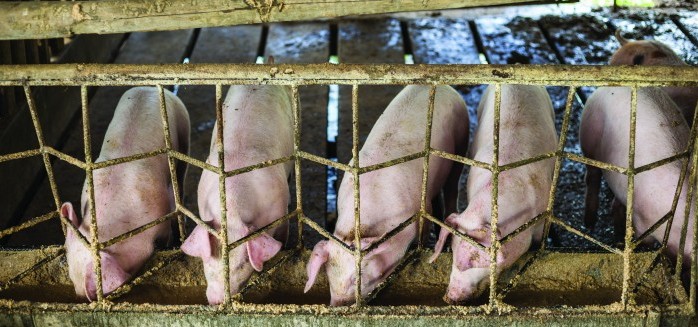China’s pig herd will take ‘over five years’ to recover from the damage wreaked by African swine fever (ASF), according to Rabobank.
However, when the herd does recover it is likely to be a very different market, with pork shortages and higher prices forcing a significant and permanent shift away from pork consumption in China.
When China’ first case of ASF was reported in August 2018, its pig herd stood at over 430m, accounting for half the world’s pigs. Such has been the scale of the devastation that the herd now stands at under 200m pigs.
Chinese Government and industry officials have spoken optimistically recently about a recovery in the pig herd, driven by growth in large pig herds. Yang Zhenhai, from China’s Ministry of Agriculture and Rural Affairs, predicted the herd would ‘bottom out’ this year and could return to normal levels in 2020.
But Rabobank analysts are forecasting a much longer road to recovery, given the scale of the devastation so far. Rabobank has predicted that ASF will kill a quarter of the word’s pig population.
The focus next year and in 2021 will be on small-scale restocking and large-scale importing before hog production increases in the years to 2025, when the market should rebalance and prices stabilise, they predict. However, even then the total herd is unlikely to return to the 2018 peak, analysts predict.
The report, China’s Recovery from African Swine Fever, Rebuilding, Relocating and Restructuring, says China will be unable to import enough pork to make up for the production shortfall in the coming years, causing high global prices.
The change in the market will also prompt consumers to change habits. Rabobank predicts China’s population will consume more chilled, frozen and processed meat – rather than the preferred fresh warm pork – while poultry consumption will rise to make up some 30% of the market by 2025.
As a result of ASF, China’s pork market will be changed forever, with pork’s share of the market declining from the recent 63% to 53%, the bank’s analysts forecast.
Chenjun Pan, animal protein senior analyst at Rabobank, said: “Everybody recognises that China’s pig population has been decimated but it isn’t fully appreciated that the market will take years – probably half a decade – to rebalance due to the huge restocking required and the fact that global imports simply cannot make up the shortfall.
“The recovery will likely start taking shape next year but we’re then looking at years of production increases to get the market back on track given the herd has roughly halved in less than 18 months.
“The key point is that even when the market does rebalance, it’s going to be a different meat environment in China. Pork will remain the country’s protein of choice but it will command a much smaller share of consumption as younger consumers lead the charge into poultry. For China, and the global market, this will be the new normal.”




